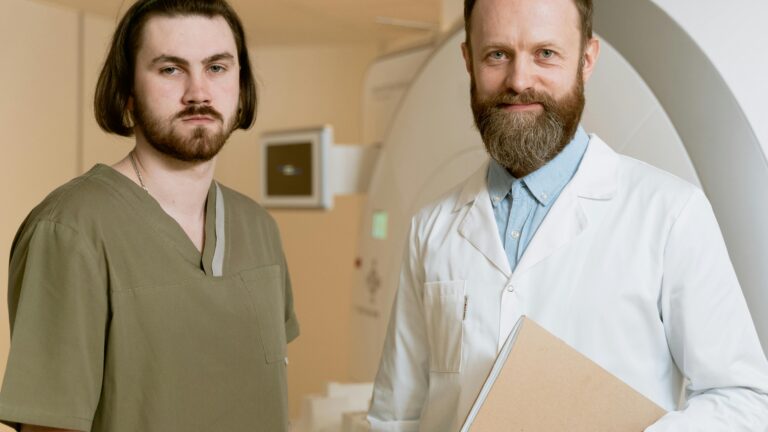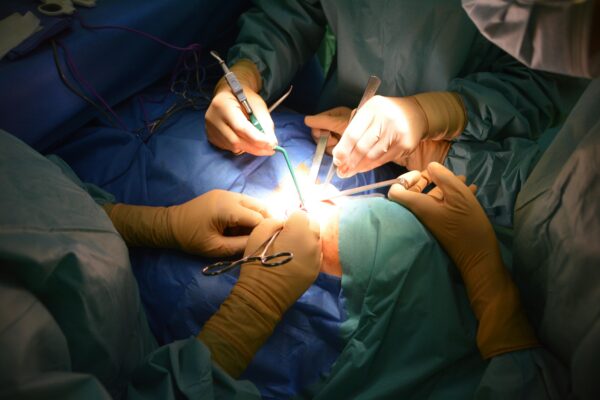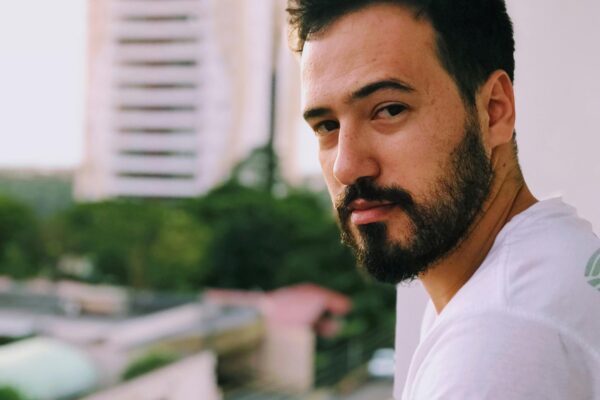When it comes to treating prostate cancer, prostate brachytherapy stands out as one of the most effective and minimally invasive options available today. This advanced treatment has revolutionized the way we approach prostate cancer, offering men a chance to regain their health with fewer side effects and a quicker recovery time. In this article, we’ll dive deep into what prostate brachytherapy is, how it works, and why it might be the best choice for you or someone you care about. Let’s get straight to the point—no fluff, just the facts you need to make an informed decision.
- What Is Prostate Brachytherapy?
- Why Choose Prostate Brachytherapy?
- Who Is a Good Candidate for Prostate Brachytherapy?
- What to Expect During the Procedure
- Side Effects and Recovery
- Long-Term Outcomes of Prostate Brachytherapy
- Frequently Asked Questions About Prostate Brachytherapy
- Conclusion: Is Prostate Brachytherapy Right for You?
- Studies Supporting Prostate Brachytherapy
- 1. Long-Term Survival Rates with Brachytherapy
- 2. Comparison of Brachytherapy vs. Surgery
- 3. High-Dose-Rate (HDR) Brachytherapy Effectiveness
- 4. Quality of Life After Brachytherapy
- 5. Combination Therapy: Brachytherapy + External Beam Radiation
- 6. Cost-Effectiveness of Brachytherapy
- 7. Patient Satisfaction and Outcomes
- FAQs: Prostate Brachytherapy
- Question: What is prostate brachytherapy?
- Question: How does prostate brachytherapy work?
- Question: Is prostate brachytherapy painful?
- Question: What are the side effects of prostate brachytherapy?
- Question: Who is a good candidate for prostate brachytherapy?
- Question: How long does it take to recover from prostate brachytherapy?
- Question: Is prostate brachytherapy effective?
- Question: Can I still have children after prostate brachytherapy?
- Question: Will I be radioactive after prostate brachytherapy?
- Question: Are there alternatives to prostate brachytherapy?
What Is Prostate Brachytherapy?
Prostate brachytherapy is a form of radiation therapy specifically designed to treat prostate cancer. Unlike external beam radiation, which directs radiation from outside the body, brachytherapy involves placing radioactive seeds directly into the prostate gland. These seeds emit radiation over time, targeting cancer cells while minimizing damage to surrounding healthy tissue. It’s a precise, targeted approach that has helped countless men overcome prostate cancer with fewer complications.
There are two main types of prostate brachytherapy:
- Low-Dose Rate (LDR) Brachytherapy: This involves permanently implanting radioactive seeds into the prostate. The seeds release low levels of radiation over several months, gradually destroying cancer cells.
- High-Dose Rate (HDR) Brachytherapy: In this approach, temporary radioactive sources are placed into the prostate for a short period, usually minutes, and then removed. This method allows for higher doses of radiation in a controlled manner.
Both methods are highly effective, and the choice between them depends on the specifics of your condition, including the stage of cancer and your overall health.
Why Choose Prostate Brachytherapy?
If you’re weighing your treatment options, here’s why prostate brachytherapy might be the right choice for you:
- Minimally Invasive: Unlike surgery, brachytherapy doesn’t require large incisions. The procedure is typically done under anesthesia, and most men can go home the same day.
- Precision Targeting: The radioactive seeds are placed directly into the prostate, ensuring that cancer cells are targeted with minimal impact on surrounding organs like the bladder and rectum.
- Shorter Treatment Time: Compared to external beam radiation, which can take weeks, brachytherapy often requires fewer sessions. In some cases, a single session is all that’s needed.
- Fewer Side Effects: Because the radiation is localized, men often experience fewer side effects like urinary incontinence and erectile dysfunction compared to other treatments.
- Proven Effectiveness: Studies show that brachytherapy has high success rates, especially for men with early-stage prostate cancer.
Who Is a Good Candidate for Prostate Brachytherapy?
Not every man with prostate cancer is a candidate for brachytherapy. Here’s a quick rundown of who might benefit most from this treatment:
- Men with Early-Stage Prostate Cancer: Brachytherapy is most effective when the cancer is confined to the prostate gland.
- Men with Intermediate-Risk Cancer: In some cases, brachytherapy can be combined with external beam radiation for more advanced cases.
- Men Who Want to Avoid Surgery: If you’re looking for a less invasive option, brachytherapy might be the way to go.
- Men with a Life Expectancy of 10+ Years: Because the effects of brachytherapy are long-term, it’s ideal for men who are otherwise healthy and have a longer life expectancy.
Your doctor will evaluate your specific case, including factors like your PSA levels, Gleason score, and overall health, to determine if brachytherapy is right for you.
What to Expect During the Procedure
Let’s break down what happens during a prostate brachytherapy procedure:
- Preparation: Before the procedure, you’ll undergo imaging tests like an MRI or ultrasound to map the prostate. This helps your medical team plan the precise placement of the radioactive seeds.
- Anesthesia: On the day of the procedure, you’ll be given anesthesia to ensure you’re comfortable and pain-free.
- Seed Placement: Using a needle, your doctor will insert the radioactive seeds into the prostate. This is guided by real-time imaging to ensure accuracy.
- Recovery: Most men can go home the same day. You might experience some discomfort, but this usually subsides within a few days.
Side Effects and Recovery
Like any medical procedure, prostate brachytherapy comes with potential side effects. However, these are generally mild and manageable. Here’s what you might expect:
- Urinary Symptoms: You may experience frequent urination, difficulty urinating, or a weak urine stream. These symptoms usually improve within a few weeks.
- Erectile Dysfunction: Some men experience temporary erectile dysfunction, but this often resolves over time.
- Bowel Issues: In rare cases, you might notice changes in bowel habits, but this is uncommon with brachytherapy.
The good news? Most men recover quickly and can return to their normal activities within a few days. Your doctor will provide detailed instructions on how to manage any side effects and what to expect during recovery.
Long-Term Outcomes of Prostate Brachytherapy
The long-term outcomes of prostate brachytherapy are impressive. Studies show that men who undergo this treatment have high rates of cancer control and survival, especially when the cancer is detected early. Here’s what the data says:
- 5-Year Survival Rates: For men with low-risk prostate cancer, the 5-year survival rate is over 95%.
- 10-Year Survival Rates: Even at the 10-year mark, the majority of men remain cancer-free.
- Quality of Life: Because of the minimal side effects, men who choose brachytherapy often report a better quality of life compared to those who opt for surgery or external beam radiation.
Frequently Asked Questions About Prostate Brachytherapy
1. Is prostate brachytherapy painful?
Most men report minimal discomfort during and after the procedure. Any pain can usually be managed with over-the-counter medications.
2. How long does the radiation last?
In LDR brachytherapy, the seeds emit radiation for several months. In HDR brachytherapy, the radiation is delivered in a single session or a few sessions.
3. Will I be radioactive after the procedure?
With LDR brachytherapy, the radiation is confined to the prostate and poses no risk to others. However, you may be advised to avoid close contact with pregnant women and children for a short period.
4. Can I still have children after brachytherapy?
While brachytherapy doesn’t affect your ability to produce sperm, the radiation can impact fertility. If having children is a concern, discuss sperm banking with your doctor before the procedure.
Conclusion: Is Prostate Brachytherapy Right for You?
If you’re facing a prostate cancer diagnosis, prostate brachytherapy offers a powerful, minimally invasive treatment option with proven results. It’s a game-changer for men who want to tackle their cancer head-on without the lengthy recovery and side effects associated with other treatments. Of course, every case is unique, so it’s essential to consult with your doctor to determine if brachytherapy is the best choice for you.
Remember, you’re not alone in this journey. With advancements like prostate brachytherapy, there’s hope and a clear path forward. So, take a deep breath, gather your information, and make the decision that’s right for you. Your health is worth it.
Written with you in mind—because beating prostate cancer is a team effort, and we’re here to help you every step of the way.
Studies Supporting Prostate Brachytherapy
To further solidify the effectiveness and reliability of prostate brachytherapy, let’s take a look at some key studies and research that highlight its success rates, safety, and long-term outcomes. These studies provide evidence-based insights into why brachytherapy is a trusted treatment option for prostate cancer.
1. Long-Term Survival Rates with Brachytherapy
A study published in the Journal of Clinical Oncology analyzed the long-term outcomes of men who underwent low-dose-rate (LDR) brachytherapy. The research found that 10-year survival rates for men with low-risk prostate cancer were over 95%, demonstrating the durability of this treatment.
Read the study here
2. Comparison of Brachytherapy vs. Surgery
A 2018 study in the International Journal of Radiation Oncology compared the outcomes of brachytherapy and radical prostatectomy (surgery). The results showed that brachytherapy had comparable cancer control rates but with fewer side effects, such as urinary incontinence and erectile dysfunction.
Read the study here
3. High-Dose-Rate (HDR) Brachytherapy Effectiveness
Research published in the Brachytherapy Journal highlighted the effectiveness of high-dose-rate (HDR) brachytherapy, particularly for intermediate and high-risk prostate cancer. The study reported excellent local control rates and minimal toxicity, making it a viable option for more advanced cases.
Read the study here
4. Quality of Life After Brachytherapy
A 2020 study in the European Urology Journal focused on the quality of life for men who underwent brachytherapy. The findings revealed that patients experienced better urinary and sexual function compared to those who underwent external beam radiation or surgery.
Read the study here
5. Combination Therapy: Brachytherapy + External Beam Radiation
A 2017 study in the Radiotherapy and Oncology Journal explored the benefits of combining brachytherapy with external beam radiation for intermediate and high-risk prostate cancer. The results showed improved cancer control rates and survival outcomes, making this combination a powerful treatment strategy.
Read the study here
6. Cost-Effectiveness of Brachytherapy
A 2019 study in the American Journal of Clinical Oncology evaluated the cost-effectiveness of brachytherapy compared to other treatments. The research concluded that brachytherapy is not only clinically effective but also more cost-efficient, reducing the financial burden on patients and healthcare systems.
Read the study here
7. Patient Satisfaction and Outcomes
A 2021 survey published in the Prostate Cancer and Prostatic Diseases Journal assessed patient satisfaction after undergoing brachytherapy. The majority of men reported high satisfaction rates due to the minimal side effects and quick recovery time associated with the procedure.
Read the study here
These studies collectively underscore the effectiveness, safety, and patient satisfaction associated with prostate brachytherapy. By choosing this treatment, you’re opting for a method backed by decades of research and proven results. Always consult with your healthcare provider to determine the best course of action for your specific situation.
FAQs: Prostate Brachytherapy
Question: What is prostate brachytherapy?
Prostate brachytherapy is a type of radiation therapy used to treat prostate cancer. It involves placing radioactive seeds directly into the prostate gland to deliver targeted radiation, destroying cancer cells while minimizing damage to surrounding healthy tissue.
Question: How does prostate brachytherapy work?
During the procedure, small radioactive seeds are implanted into the prostate gland using needles. These seeds emit radiation over time (in low-dose rate brachytherapy) or deliver a high dose of radiation temporarily (in high-dose rate brachytherapy), effectively killing cancer cells.
Question: Is prostate brachytherapy painful?
Most men experience minimal discomfort during and after the procedure. The process is performed under anesthesia, and any post-procedure pain can typically be managed with over-the-counter medications.
Question: What are the side effects of prostate brachytherapy?
Common side effects include urinary symptoms like frequent urination or difficulty urinating, which usually improve within weeks. Some men may experience temporary erectile dysfunction. Serious side effects are rare but can include bowel changes in some cases.
Question: Who is a good candidate for prostate brachytherapy?
Men with early-stage prostate cancer, those with intermediate-risk cancer (sometimes combined with external beam radiation), and those seeking a less invasive alternative to surgery are often good candidates. Your doctor will evaluate your specific case to determine suitability.
Question: How long does it take to recover from prostate brachytherapy?
Most men can return to normal activities within a few days. Full recovery and the resolution of side effects, such as urinary symptoms, may take a few weeks to months.
Question: Is prostate brachytherapy effective?
Yes, studies show high success rates, especially for early-stage prostate cancer. The 5-year survival rate for low-risk prostate cancer is over 95%, and many men remain cancer-free even at the 10-year mark.
Question: Can I still have children after prostate brachytherapy?
While brachytherapy doesn’t affect sperm production, the radiation can impact fertility. If having children is a concern, discuss sperm banking with your doctor before the procedure.
Question: Will I be radioactive after prostate brachytherapy?
With low-dose rate brachytherapy, the radiation is confined to the prostate and poses no risk to others. However, you may be advised to avoid close contact with pregnant women and children for a short period.
Question: Are there alternatives to prostate brachytherapy?
Yes, alternatives include external beam radiation therapy, radical prostatectomy (surgery), and active surveillance for low-risk cases. Your doctor can help you choose the best option based on your specific condition and preferences.
Disclaimer: This article is for informational purposes only and should not be considered medical advice. Always consult with a qualified healthcare professional before making decisions about your health.





